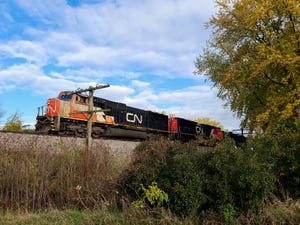Danforth center receives $8m for bioenergy program 11115
Understanding key phenotype-to-genotype associations in bioenergy sorghum will enhance efforts to bring products to market.
June 18, 2015

The Donald Danforth Plant Science Center announced June 18 that it was awarded an $8 million grant from the U.S. Department of Energy ARPA—E TERRA program. Funds will be used for research to accelerate breeding and the commercial release of economically viable bioenergy sorghum hybrids.
Dr. Todd Mockler, the Geraldine & Robert Virgil distinguished investigator at the Danforth Center is the principal investigator of this multi-institutional project.
The U.S. Department of Agriculture has forecast that more than 90% of U.S. cellulosic bioenergy needs will be met through biomass production in the South, with sorghum identified as a key crop. The new sorghum bioenergy belt will span east Texas, the Mississippi Valley, the Gulf Coast and the southern Atlantic Coast, according to the announcement.
Sorghum is a drought- and heat-tolerant member of the grass family and is grown worldwide. Sorghum’s adaptability to diverse environments, low fertilizer requirements, high biomass potential and its compatibility with row crop production positions it to become a leading bioenergy crop in the U.S.
Mockler will lead a team focused on deploying an automated, robust field phenotyping system to deliver baseline crop trait data, which will accelerate development of high-yielding bioenergy sorghum.
"By understanding the phenotypic and genomic variation of bioenergy sorghum, we will lay the foundations for deploying computationally-enabled breeding strategies that will generate high-yielding sorghum hybrids," Mockler said. "These will be optimized for the U.S. sorghum bioenergy belt, making this crop a leading feedstock source for biofuel production."
Partner institutions include Clemson University, the HudsonAlpha Institute for Biotechnology, Kansas State University, Texas A&M University, the University of Arizona, the University of Illinois and Washington University in St. Louis (Mo.), with key collaborators at the National Center for Supercomputing Applications and the U.S. Arid Land Agricultural Research Center of the USDA-Agricultural Research Service.
You May Also Like


.png?width=300&auto=webp&quality=80&disable=upscale)
